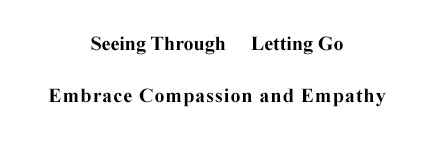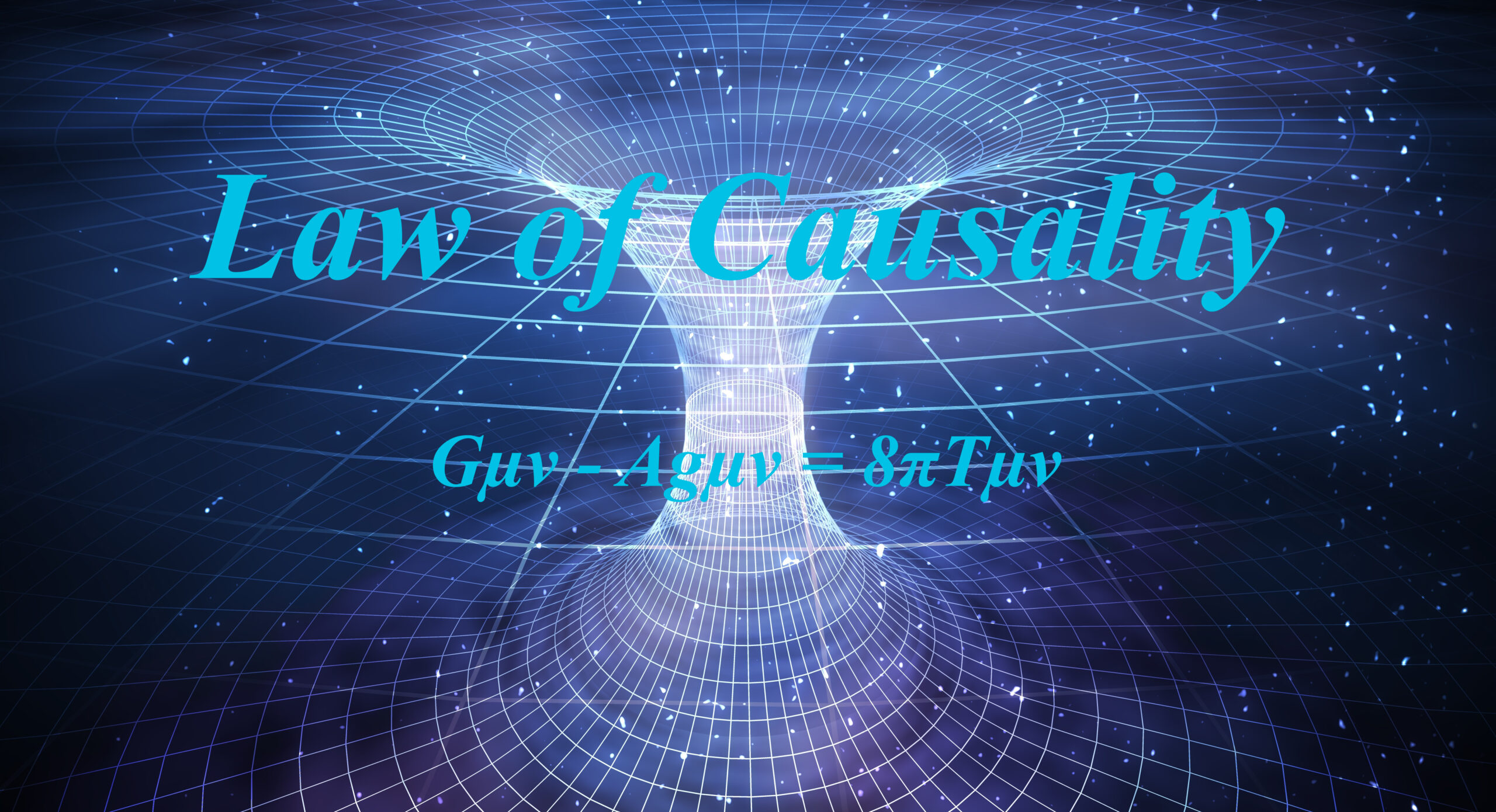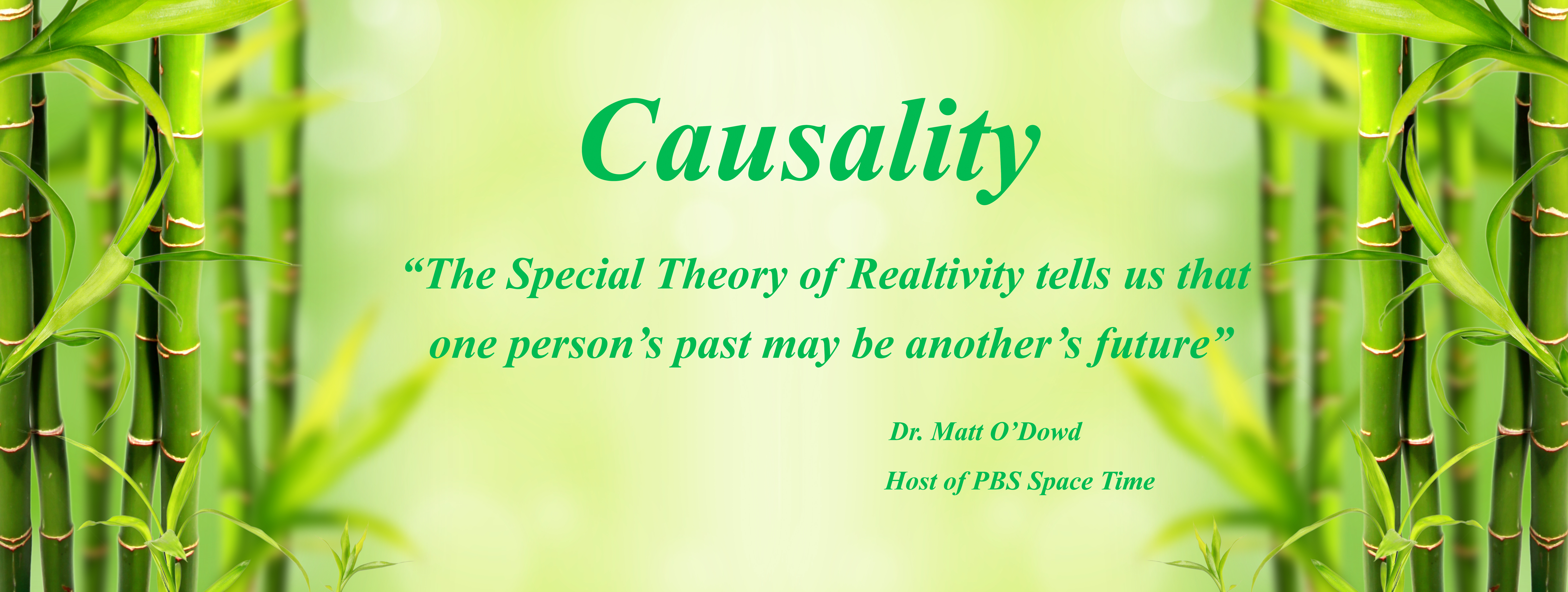This post discusses Causality, Buddha’s teaching that impacts every human being. However, with the advent of Eistein’s Special Relativity, Causality has also entered the scientific domain.
The Romanized Sanskrit term for Causality is hetupratyaya.
Hetupratyaya (Chinese=因緣), according to The Princeton Dictionary of Buddhism, is “In Sanskrit, “causes and conditions,” or “causality,” one of the cardinal teachings of Buddhism. In the Buddhist account of this causal process, Hetu designates the main or primary cause of production, and Pratyaya are the subsidiary factors that contribute to the production of an effect, or “fruit” (Romanized Sanskrit=phala; Chinese=果), from that cause. In the production of a sprout from a seed, e.g., the seed would be the cause (hetu), such factors as light and moisture would be conditions (pratyaya), and the sprout itself would be the result or “fruit (phala).”
Condition (Romanized Sanskrit=pratyaya; Chinese=緣), according to The Princeton Dictionary of Buddhism, refers “to the subsidiary factors whose concomitance results in the production of an effect from a cause.”
Vipaka (Chinese=果報), according to The Princeton Dictionary of Buddhism, is “in Sanskrit and Pali, lit. “ripening,” thus “maturation,” “fruition,” or “result,” referring specifically to the “maturation” of past deeds (Karman).” Vipaka refers to any mental phenomenon that occurs as a result of morally wholesome or unwholesome volitional actions performed by the body, speech, or mind, either in this or previous lives. Fruitions can be divided between those that occur during the lifetime in which the deed is performed, those that occur in the lifetime immediately following the life in which the deed is performed, and those that occur two or more lifetimes later. Although the fruition is the result of a wholesome or unwholesome act, the vipaka is itself always morally neutral and manifests itself as pleasant or painful that is either physical or mental.”
The doctrine of causality states that nothing happens by chance, but everything is causally related (Chinese=沒有機緣巧合 =, 只有因果關係).
However, for a cause to fructify, the right conditions must also be present simultaneously. As Buddha teaches in the Twelvefold Chain of Dependent Origination, the whole chain breaks apart if one of the intermediary chains is absent.
Karman is another key concept in Buddha’s Causality.
Karman (Chinese=業), according to The Princeton Dictionary of Buddhism, is “in Sanskrit, “action”: in its inflected form “karma,” it is now accepted as an English word, a term used to refer to the doctrine of actions and its corresponding “ripening” or “fruition (Vipaka), according to which virtuous deeds of body, speech, and mind produce happiness in the future (in this life or subsequently lives), while nonvirtuous deeds lead instead to suffering.”
According to The Princeton Dictionary of Buddhism, Buddhists consider Karman “as mental intention (Cetana) or intentional acts: the Buddha specifically says, “action is volition, for after having intended something, one accomplishes action through body, speech, and the mind.” In other words, the “action” of Karman refers not to physical actions but mental actions.
Cetana (Chinese=思), according to The Princeton Dictionary of Buddhism, is “in Sanskrit, “volition,” or “stimulus;” one of the omnipresent mental factors (Mahabhumika; Sarvatraga) that accompanies each moment of consciousness; intention directs the mind towards either salutary (kusala; Chinese=善), unsalutary (akusala; Chinese=不善), or neutral (avyakrta; Chinese=無記) objects.” Furthermore, “intention motivating a deed plays a significant role in the positive or negative karmic weight of the deed itself.”
Cittasamtana (Chinese=心相續), according to The Princeton Dictionary of Buddhism, is “in Sanskrit, “mental continuum.” It is employed in the Abdhidarma tradition to clarify that there is continuity between an action (Karman) that an individual undertakes and its eventual effect (vipaka), as well as continuity between one lifetime and the next, without going so far as to posit a perduring self.”
Alayavijnana is another crucial teaching regarding Causality in Buddhism.
Alayavijnana (Chinese=阿賴耶識/藏識), according to The Princeton Dictionary of Buddhism, is “in Sanskrit, “storehouse consciousness,” or “foundational consciousness;” the eighth of the eight types of consciousness (vijnana) posited in the Yogacara school. All forms of Buddhist thought must be able to uphold (1) the principle of cause and effect of action (Karman), the structure of Samsara, and the process of liberation (vimoksa) from it, while also upholding (2) the fundamental doctrine of impermanence (anitya) and the lack of a perduring self (anatman). The most famous and comprehensive solution to the range of problems created by these apparently contradictory elements is the alayavijnana. The alayavijnana provides that solution as a foundational form of consciousness, itself ethically neutral, where all the seeds (bija) of all deeds done in the past reside, and from which they fructify in the form of experience. Thus, the alayavijnana is said to pervade the entire body during life, to withdraw from the body at the time of death (with the extremities becoming cold as it slowly exits), and to carry the complete karmic record to the next rebirth destiny.” “The alayavijnana thus provides continuity from moment to moment within a given lifetime and from lifetime to lifetime, all providing the link between an action performed in the past and its effect experienced in the present, despite protracted periods of latency between the seed and fruition.”
When all these Buddhist teachings are taken together, one understands that karma, the “mental intention,” is the driver that starts the cycles of causality. How the cause fructifies depends on whether “intention directs the mind towards either salutary (kusala; Chinese=善), unsalutary (akusala; Chinese=不善), or neutral (avyakrta; Chinese=無記) objects.” However, fructification may or may not be instant, as “there is continuity between an action (Karman) that an individual undertakes and its eventual effect (vipaka), as well as continuity between one lifetime and the next, without going so far as to posit a perduring self.” Cittasamtana is the term for the mental “continuity between one lifetime and the next.”
If the fructification happens in the next life, then Alayavijnana, the “storehouse consciousness,” “withdraws from the body at the time of death (with the extremities becoming cold as it slowly exits), and to carry the complete karmic record to the next rebirth destiny.”
In other words, the “you” in another life refers not to the physical “you” in the present life, which disintegrates at the end of each life. Instead, what follows you in the next life is your “karmic record.” Fruition, if it happens in a future life when conditions are right, will be experienced by the then physical body carrying “your” karmic record.
So, what is one’s “karmic record?” The karmic record is one’s memory. Just as one’s memory stays with the person all this life, it also continues across lifespans. After your mentality “withdraws from the body at the time of death,” it takes residence in another body in its next lifetime.
Where the body will end up in the next lifetime depends on whether the intention was “morally wholesome or unwholesome.” Wholesome intentions end up in “good destiny (Romanized Sanskrit=sugati; Chinese=善趣,” while unwholesome intentions end up in “baleful destiny (Romanized Sanskrit=durgati; Chinese=惡趣)” in Samsara.
Samsara (Chinese=輪迴), according to The Princeton Dictionary of Buddhism, is “in Sanskrit and Pali, “wandering,” viz., the “cycles of rebirth.”
There are two types of Samara, and their Romanized Sanskrit names are pariccedajaramarana and parinamikajaramarana.
Pariccedajaramarana (Chinese=分段生死), according to The Princeton Dictionary of Buddhism, is “in Sanskrit, “determinative birth-and-death. This is Samsara as experienced by ordinary sentient beings taking rebirth within the three realms of existence (Romanized Sanskrit=Traidhatuka/Trailoya; Chinese=三界). The main causes and conditions that lead to determinative birth-and-death are contaminated action and afflictive obstructions.”
Parinamikajaramarana (Chinese=變易生死), according to The Princeton Dictionary of Buddhism, is for “those beings (who) have overcome the afflictive obstructions, ….. may still be subject to cognitive obstructions.“
With Buddhist Causality explained, we now turn to science to learn what it teaches about Causality.
In this video, The Geometry of Causality, astrophysicist Dr. Matt O’Dowd made the following opening remark, “The special theory of relativity tells us that one person’s past may be another’s future. When time is relative, paradoxes threaten. Today, we peer deeper into Einstein’s theory to find that the immutable ordering of cause and effect emerges when we discover the causal geography of spacetime.”
Indeed, Einstein’s special theory of relativity has confirmed Buddha’s teaching that there is an “immutable ordering of cause and effect.,” and “that one person’s past may be another future” occurring over the “geography of spacetimes.”
However, what is the driver of causality in special relativity?
In this video lecture, A Universe from Nothing, Dr. Lawrence Kruss talks about Einstein’s Special Relativity equation. About 19:30 minutes into the lecture, Dr. Krauss explained that while one side of Einstein’s formula is “a geometric quantity,” the other side of the equation represents “energy and momentum of the universe.”
So, the drivers of scientific Causality are energy and momentum. However, energy being a quantitative property, how can numbers and momentum be the driver of Causality?
However, if we apply the same principle we have used so far by replacing energy with mentality, then “energy-moment” becomes “mental-momentum.”
In other words, both sides of Einstein’s Special Relativity together completely confirm Buddha’s Causality. The left side of the equation affirms that a person’s past becomes another’s future over time and space. The right side of the equation confirms Buddha’s teaching that the driver of the journey is mental when mentality replaces energy in the formula.


